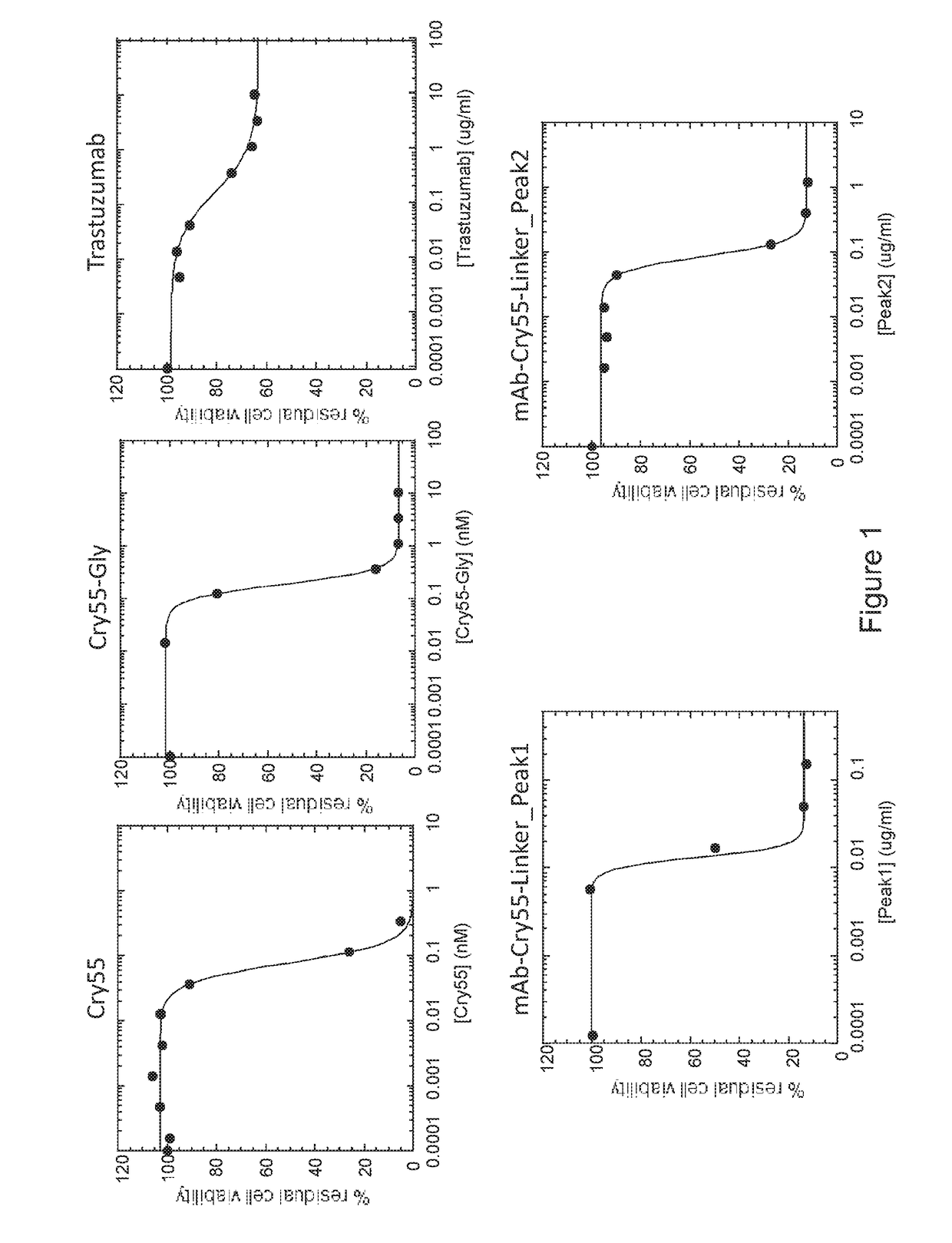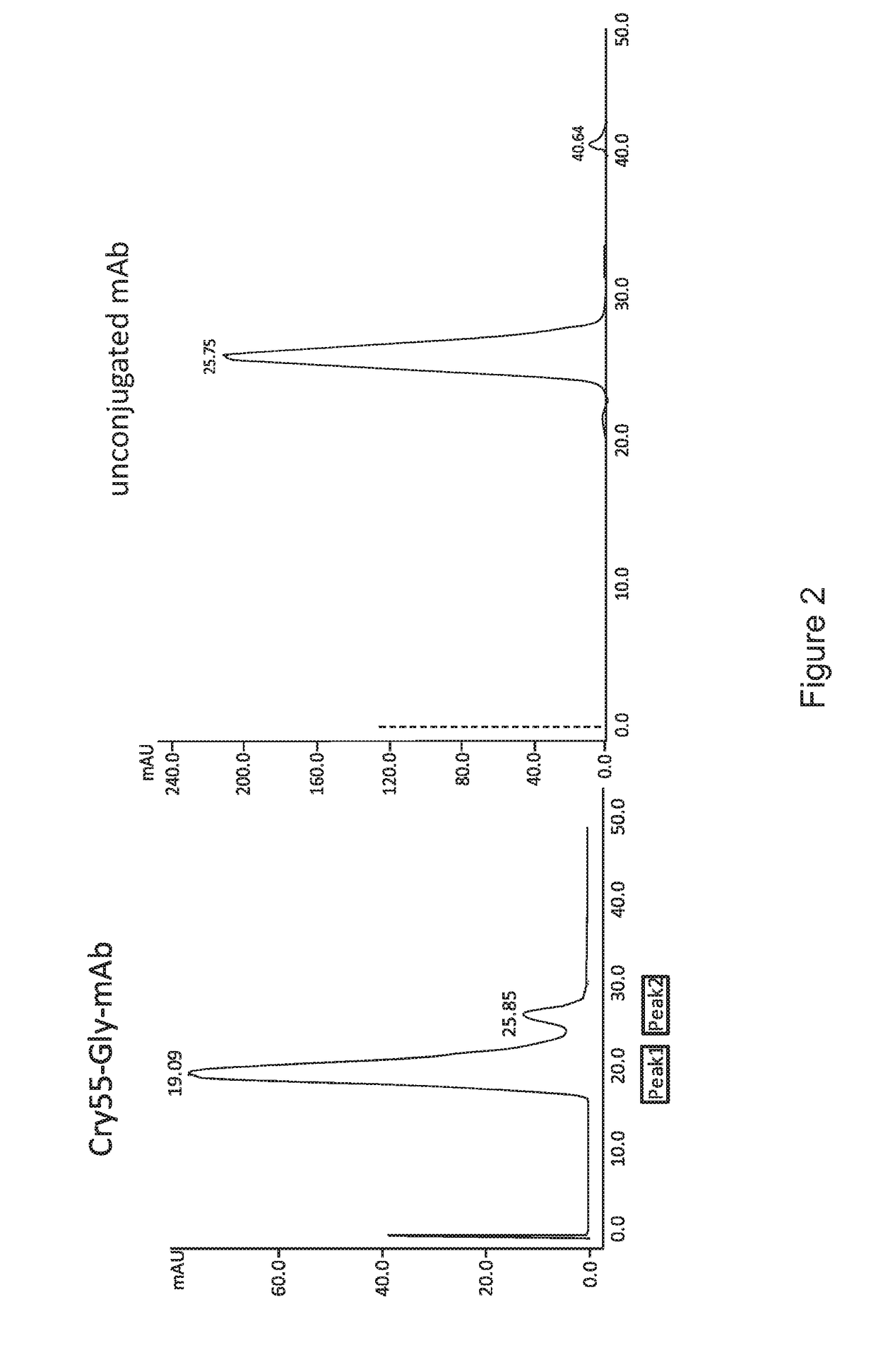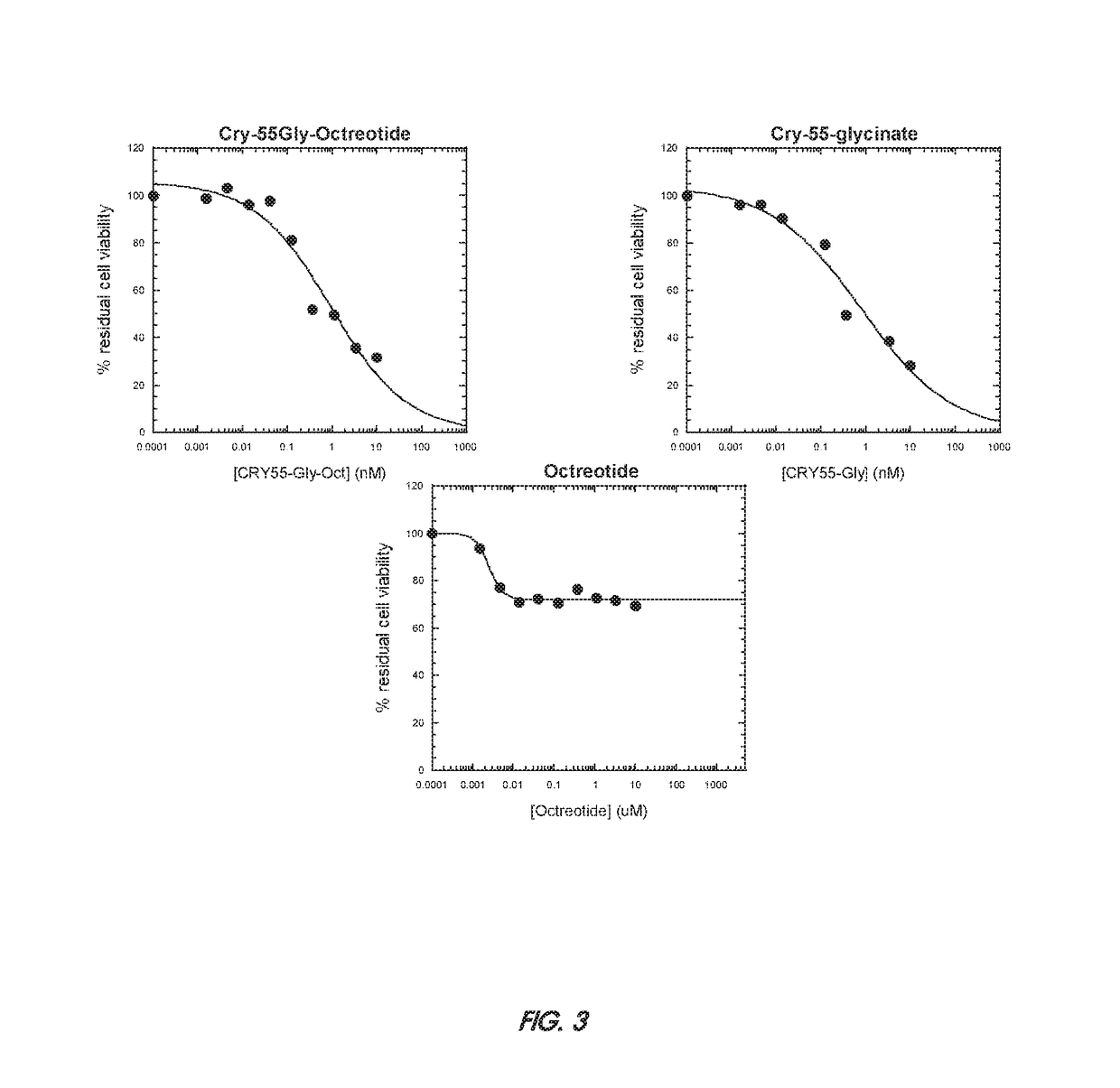Cryptophycin-based antibody-drug conjugates with novel self-immolative linkers
a technology of antibody-drug conjugates and cryptophycin, which is applied in the field of medical chemistry, can solve the problems of many tmas that showed promise in preclinical studies when used on their own failed in the clinic, the majority of patients in this population fail to respond to herceptin treatment or only poorly
- Summary
- Abstract
- Description
- Claims
- Application Information
AI Technical Summary
Benefits of technology
Problems solved by technology
Method used
Image
Examples
example 1
Preparation of Cryptophycin-55-Glycinate ADC Upon Partial Reduction of the Antibody Inter-Chain Disulfide Bonds with TCEP (tris(2-carboxyethyl)phosphine) Method
[0107]From a freshly prepared PBS-EDTA-buffer pH 7.2 a TCEP-PBS-EDTA-solution [3 mM TCEP (Sigma-Aldrich) in 100 uL of PBS-EDTA-solution] and a mAb-PBS-EDTA-solution (9 mg / mL Trastuzumab in 0.8 mL PBS-EDTA-solution; 62 uM Trastuzumab) were prepared. The TCEP-PBS-EDTA-solution was added to the mAb-PBS-EDTA-solution and the resulting solution was incubated at 25° C. for 60 min. Final concentrations of the reagents were as follows: 8 mg / mL reduced Trastuzumab (55 uM), 290 uM TCEP.
[0108]Then desalting on a HiTrap Desalting Sephadex G25-5 mL (GE Healthcare / Amersham) column pre-equilibrated in PBS-EDTA-buffer pH 7.2 was performed using an Äkta instrument, and fractions of 0.25 mL volume were collected in PBS-EDTA-buffer. All fractions were tested for their protein-content (2 uL of each fraction was added to 200 μL Bradford-solution)...
example 2
Preparation of the Cryptophycin-55-Glycinate ADC Upon Partial Reduction of the Antibody Inter-Chain Disulfide Bonds with 2-MEA (2-Mercaptoethylamine.HCl) Method
[0112]From a freshly prepared PBS-EDTA-buffer (137 mM NaCl; 2.7 mM KCl; 10 mM Na2HPO4; 2 mM KH2PO4; 10 mM EDTA; pH=7.2) a 2-MEA-PBS-EDTA-solution (6 mg 2-MEA in 100 uL PBS-EDTA-solution) and a mAb-PBS-EDTA-solution (10 mg Trastuzumab in 1 mL PBS-EDTA-solution; 68.7 uM Trastuzumab) were prepared. The 2-MEA-PBS-EDTA-solution (300 uL) was added to mAb-PBS-EDTA-solution (1 mL) and the resulting solution was incubated at 37° C. for 90 min. Final concentrations of the reagents were as follows: 7.7 mg / mL reduced Trastuzumab (53 uM), 13.8 mg 2-MEA (122 mM).
[0113]Then desalting on a HiTrap Desalting Sephadex G25 5 cm column (PBS-EDTA-buffer) was performed and fractions of 0.5 mL volume were collected. All fractions were visually tested for their protein-content (2 uL of each fraction was added to 200 μL Bradford-solution). The protein...
example 3
[0114]Cell Viability Assays
[0115]Tumor cell lines (breast carcinoma cell lines SKBR-3 and MCF7 and colon carcinoma cell line HCT116) were obtained from American Type Culture Collection and were grown according to standard protocols. SKBR-3 cells are known to express high Her2 levels and therefore are trastuzumab-sensitive, while MCF7 and HCT116 cells show low Her2 expression and therefore are trastuzumab-resistant. The effects of the cryptophycin-55-glycinate ADC conjugate on tumor cell viability were assessed using the CellTiter-Glo® Luminescent Cell Viability Assay (Promega), according to the manufacturer protocol. To be able to detect a difference between the unconjugated trastuzumab and the trastuzumab ADC, we had previously identify experimental conditions (concentration ranges, incubation time) under which trastuzumab only affected SKBR-3 cell viability by about 30%, while free cryptophycin 55 was equally effective on all tumor cell lines. Cells were plated in black-walled 96-...
PUM
| Property | Measurement | Unit |
|---|---|---|
| Volume | aaaaa | aaaaa |
| Volume | aaaaa | aaaaa |
| Volume | aaaaa | aaaaa |
Abstract
Description
Claims
Application Information
 Login to View More
Login to View More - R&D
- Intellectual Property
- Life Sciences
- Materials
- Tech Scout
- Unparalleled Data Quality
- Higher Quality Content
- 60% Fewer Hallucinations
Browse by: Latest US Patents, China's latest patents, Technical Efficacy Thesaurus, Application Domain, Technology Topic, Popular Technical Reports.
© 2025 PatSnap. All rights reserved.Legal|Privacy policy|Modern Slavery Act Transparency Statement|Sitemap|About US| Contact US: help@patsnap.com



